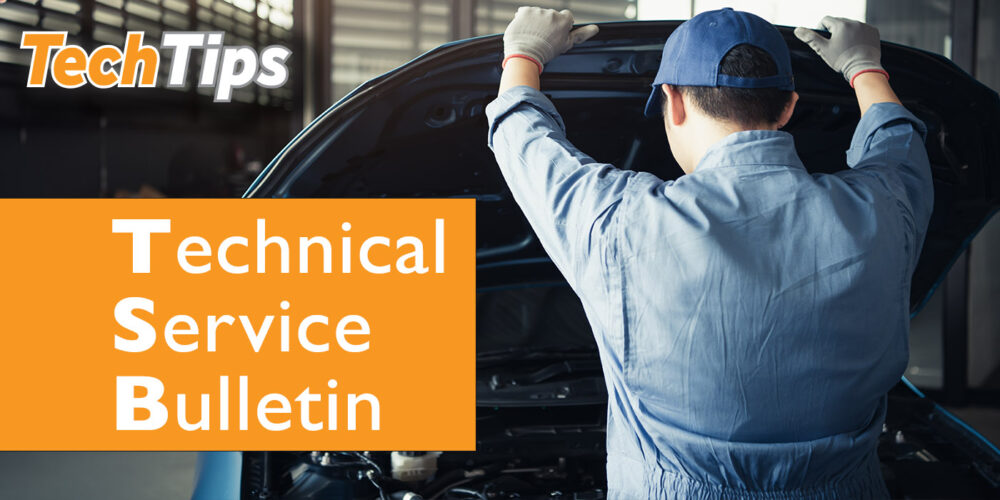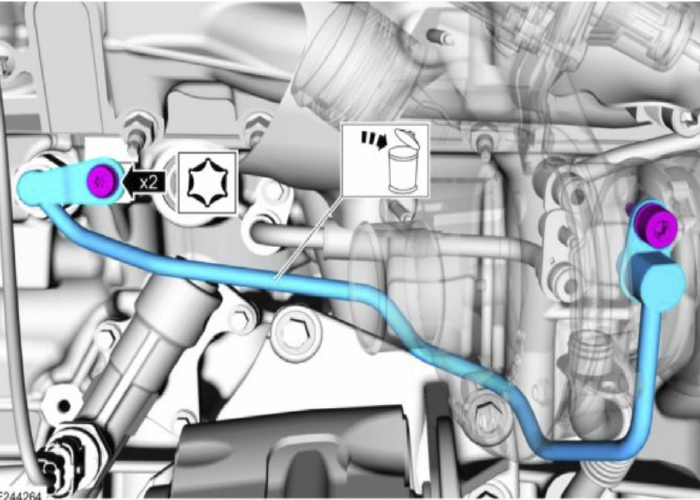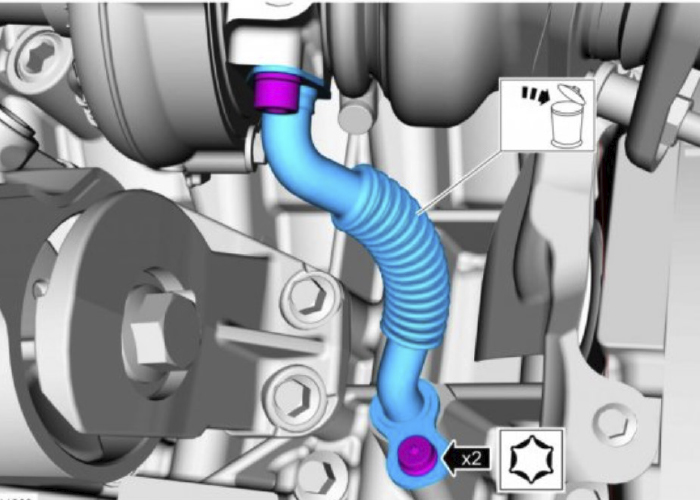For 2015-2024 Ford and Lincoln vehicles equipped with turbocharged engines and customer concern of an engine oil leak. Ford has evaluated turbochargers replaced for oil leak symptoms and although oil may collect on the external surface of a turbocharger, it is extremely rare for a turbocharger assembly to be the root cause of the oil leak.
Ford has revised the service information for the inspection and pinpoint tests of the turbocharger and oil lines. Careful inspection of the turbocharger oil feed and drain tubes should be performed along with the recommended procedures as needed.
According to Ford, it is very unlikely for the turbocharger to leak engine oil externally. The moving parts of a turbocharger that require oil are contained in a housing with no external sealing surfaces. Pressurized engine oil is supplied to the turbocharger from the engine through an oil supply tube and drains back to the engine sump through an unpressurized return tube. The most likely source of an external oil leak would be from the oil supply or oil return tubes or the gaskets and seals.
Perform an oil leak inspection. Refer to 303-00 Engine System, Oil Leak Inspection for the engine being diagnosed. Visually inspect the oil supply tube for traces of oil. Check the engine and the turbocharger ends. Check for oil running down from other areas of the tube or the engine to locate the source of the leak. Check the oil supply tube gaskets and seals.
Movement of the vehicle, underhood components or gravity can cause oil leaks to appear in different areas from the source of the oil leak. Follow the trace of the oil leak to the source.
Is the oil supply tube leaking oil?
Yes: Install a new turbocharger oil supply tube.
No: Check the oil return tube. Visually inspect the oil return tube for traces of oil. Check the engine and the turbocharger ends. Check for oil running down from other areas of the tube or the engine to locate the source of the leak. Check the oil return tube gaskets and seals.
Is the oil return tube leaking oil? Yes: Install a new turbocharger oil return tube. No: Carry out an oil leak inspection on the engine.
















